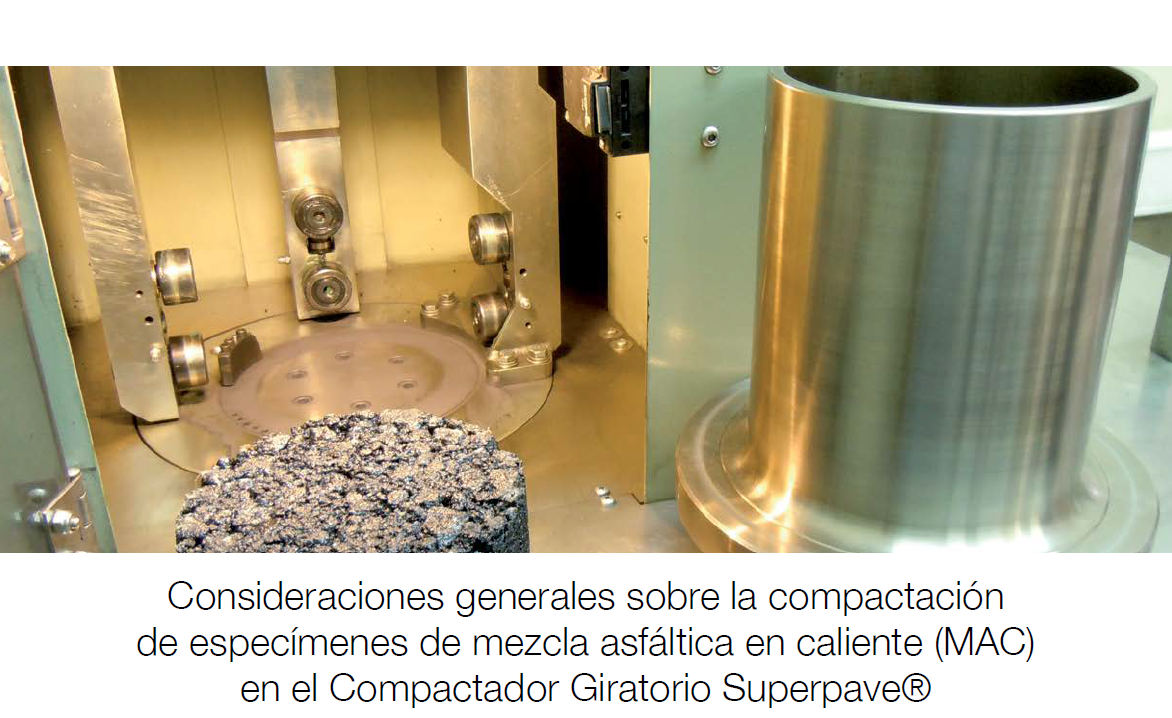Abstract
The compaction of hot mix asphalt (HMA) in the Superpave® Gyratory Compactor is the developments in the laboratory mixture design. The compaction equipment was designed in order to simulate the densification that occurs on site during construction and in service. Another objective was to measure somehow the “workability” of the mix, said it in other words, how easy or difficult is to compact the asphalt mixture.
Also, it was considered the use of larger size aggregates. Finally, the equipment should be easy enough to use in conducting the quality assurance and control tests. This article summarizes the history, the operation of the equipment, the test method, the results and finally, the conclusions and recommendations based on the experience gathered over the years using this equipment in LanammeUCR.
References
American Association of State Highway and Transportation Officials. AASHTO Designation: T 312-04, Standard method of test for preparing and determining the density of hot-mix asphalt (HMA) specimens by means of the Superpave Gyratory Compactor. Washington D.C., Estados Unidos, 27ava Edición, 2007.
American Association of State Highway and Transportation Officials. AASHTO Designation: R 30-02, Standard practice for mixture conditioning of hot-mix asphalt (HMA). Washington D.C., Estados Unidos, 27ava Edición, 2007.
American Association of State Highway and Transportation Officials. AASHTO Designation: TP 71-09, Standard method of test for evaluation of Superpave Gyratory Compactor (SGC) internal angle of gyration using simulated loading. Washington D.C., Estados Unidos, 29ava Edición, 2009.
American Association of State Highway and Transportation Officials. AASHTO Designation: R 35-04, Standard practice for Superpave volumetric design for hot-mix asphalt (HMA). Washington D.C., Estados Unidos, 27ava Edición, 2007.
American Association of State Highway and Transportation Officials. AASHTO Designation: M 323-07, Standard specification for Superpave volumetric mix design. Washington D.C., Estados Unidos, 27ava Edición, 2007.
Instituto del Asfalto. Antecedentes del diseño y análisis de mezclas asfálticas de Superpave. Kentucky, Estados Unidos, 1era Edición, 1996.
Prowell, B. y Brown, E.R. NCHRP Report 573: Superpave mix design: verifying gyration levels in the Ndesign table. Washington D.C., Estados Unidos, 2007.
National Asphalt Pavement Association. Virtual Superpave Laboratory. Educational Series 001 (ED-001). Maryland, Estados Unidos. 2005. http://training.ce.washington.edu/VSL/about.htm
Asphalt Institute Technical Advisory Committee. Guidance Document: Determination of Laboratory Mixing and Compaction Temperatures for Hot-Mix Asphalt. Estados Unidos. 2011.
Federal Highway Administration. Technical Brief: Superpave mix design and gyratory compaction levels. FHWA‐HIF‐11‐031. Estados Unidos. 2010.
http://www.fhwa.dot.gov/pavement/materials/pubs/hif11031/tb00.cfm
Federal Highway Administration. Technical Brief: Review of aggregate and asphalt mixture specific gravity measurements and their impacts on asphalt mix design properties and mix acceptance. FHWA‐HIF‐11‐033. Estados Unidos. 2010. http://www.fhwa.dot.gov/pavement/materials/pubs/hif11032/tb00.cfm
National Center of Asphalt Technology. Hot mix asphalt for seniors and graduate students. Alabama, Estados Unidos. 2004.
Pine Instrument Company. AFGC125XA Gyratory Compactor operation manual. Pennsylvania, Estados Unidos. 1999.






